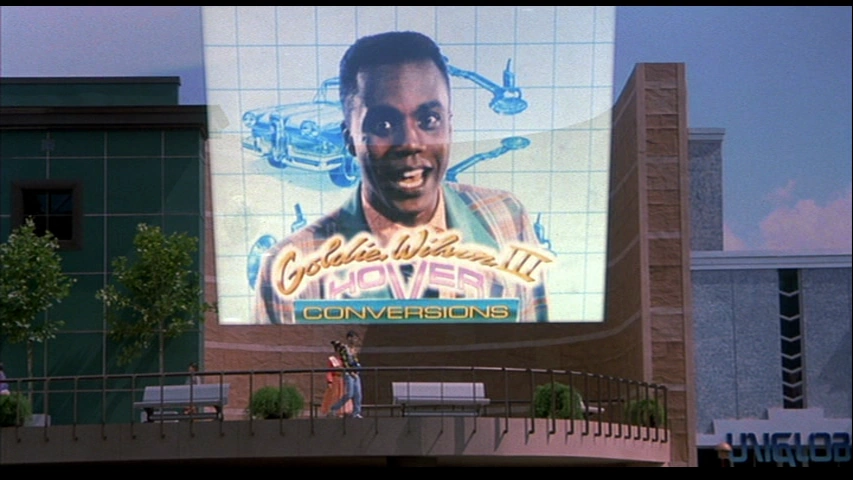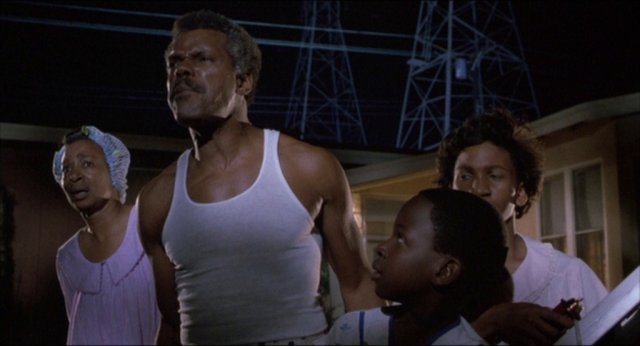Unless you’ve been living under a rock for the last ten months, you’re probably well aware that today is Back to the Future Day. Though not a national holiday (yet), today has been so named because it is the day Marty McFly arrives in the future in 1989’s Back to the Future Part II. Though most blogs will be reminiscing about the classic movie trilogy and documenting everything the movie got right (and wrong) about 2015, we’re going to use this space to rank all of the people of color in the movie.
Let me start by saying how much the BTTF trilogy means to me as a child of the ’80s. Those movies personify nostalgia and to this day, the sight of a stainless steel DeLorean or the opening strains of Alan Silvestri’s score — and the raspy tones of Huey Lewis’ voice — recall a childhood innocence like few other films.
But since it’s a film series that came out in the 1980s, it’s also heavy with whiteness. Even in the future of 2015, people of color are few and far between — which is odd considering that 30 years from now, whites will be in the minority in the United States. Don’t believe me?
Speaking of our man Hari Kondobolu, his birthday, coincidentally, falls on BTTF Day and he absolutely loves the movies.
But let me get back to the future1 and talk about how the second film predicts (or doesn’t) a multicultural Hill Valley. We’re going to focus on Part II — because that’s the whole reason people are celebrating today — and ignore the problematic depictions of brown and black people in Part I, or the way Native Americans are depicted in the third movie. Instead, we’re going to rank all of the characters of color that show up in the middle of the trilogy.
1. Goldie Wilson III

In 2015, the third generation of the Wilson family has decided not to go into politics like his father and grandfather — who were both mayors of Hill Valley. This time, Donald Fullilove isn’t playing a janitor but appears on a giant screen advertising his “Hover Conversion” technology that turns regular cars into flying cars. Though he’s relegated to a car ad, at least Fullilove’s character gets a name. And lines.
2. The Black McFlys

Though not technically in the future, the only other black people in the movie live in the alternate 1985 timeline. After Biff changes history with the Sports Almanac, Marty returns to a changed present in which Hill Valley is no longer the gleaming, upper-middle class suburb it once was. Not only that, but his house now has bars on the window and is occupied by an unnamed African American family led by a patriarch played by veteran actor Al White. Because what better way to signal the economic downturn of a community than by showing that black folks live there?
3. Jason Scott Lee

In a blink-and-you-miss-it cameo, the future Bruce Lee biopic star is a member of Griff’s gang in 2015. Of course he doesn’t have a name — or barely any lines — but you know he’s Asian because his hoverboard has a Japanese battle flag motif. Because of course it does.
4. Uh….
That’s it. That’s the list2.


I found your article very interesting. I never really thought about representation of people in color in movies and TV, and think it’s sad that they do not get much of it. I’m very glad that has changed a little, but the film industry has far to go. Thank you for saying what needed to be said! Also, it’s really cool that it’s Back to the Future day!
This movie series is over a decade old, so don’t hate it because of its cast. Also, am I the only one who feels a remake coming in the future.
This is awesome.
It’s kind of galling how Zemeckis cast Jason Scott Lee in that manner given that he’s of Chinese and Hawaiian ancestry. (SMH) But, then too “they” cast Jason as Mowgli in The Jungle Book. You know, we all “look alike.” (NOT.)
Keith, even though I, too am basically a child of the 80s and hail from The Motor City, I wasn’t much into BTTF unlike Ghostbusters, which was released in 1984. At least Ghostbusters featured Ernie Hudson, Jr. as a crew member. Jeez, the list you comprised is stark and very telling as to the fixation on Caucasian nostalgia that permeated the times. Clearly, Robert Zemeckis was not as visionary as he is now.